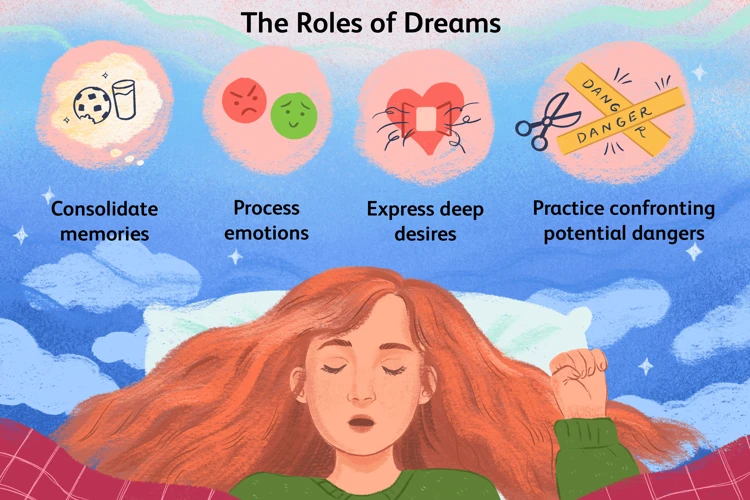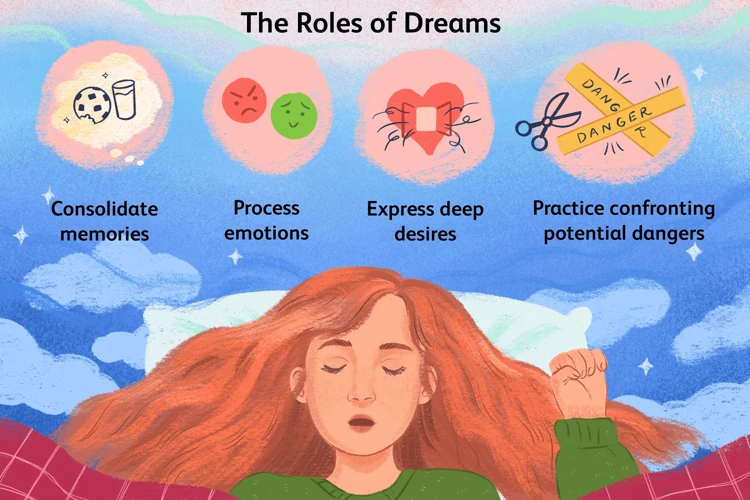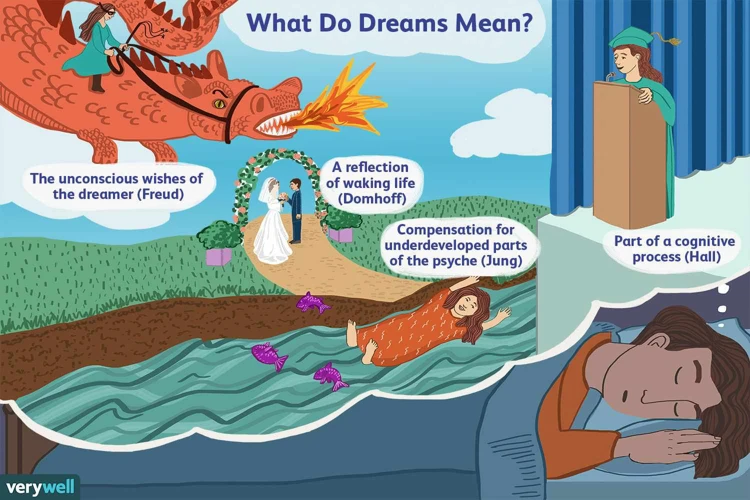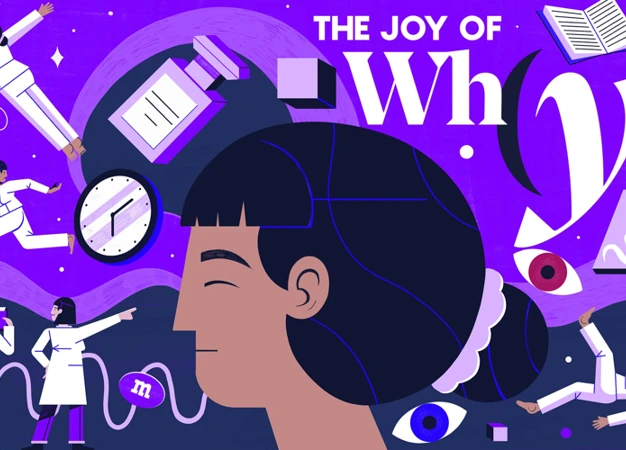Have you ever woken up from a dream feeling an intense mix of emotions? Perhaps you experienced fear, joy, or sadness all within the same dream. It can be perplexing to understand why we experience such a range of emotions while we sleep. In this article, we will delve into the fascinating science behind why our dreams evoke different emotions. We will explore the role of the brain in dream emotions, how emotional memories are incorporated into our dreams, and the various theories that attempt to explain this enigmatic phenomenon. Get ready to uncover the secrets of your dream world and gain a deeper understanding of why we experience such diverse emotions while we sleep.
The Role of the Brain in Dream Emotions

The Role of the Brain in Dream Emotions
Our brain plays a crucial role in generating and experiencing emotions within dreams. One key player in the realm of dream emotions is the amygdala. The amygdala is a small, almond-shaped structure located deep within the brain. It serves as the emotional processing center, responsible for detecting and interpreting emotional stimuli. During REM sleep, when dreaming occurs, the amygdala becomes highly active, leading to the vivid emotional experiences we often have in our dreams. Neurotransmitters and hormones also contribute to dream emotions. For instance, the neurotransmitter dopamine is involved in feelings of pleasure and reward, while norepinephrine is linked to arousal and stress. These chemicals can influence the intensity and nature of our emotional experiences in dreams. Understanding the neural mechanisms at play during dreaming can help us unravel the mysterious world of dream emotions and their impact on our waking lives.
The Amygdala: The Emotional Processing Center
The Amygdala: The Emotional Processing Center
The amygdala, a small almond-shaped structure nestled deep within the brain, serves as the emotional processing center during dreaming and wakefulness alike. It is responsible for detecting and interpreting emotional stimuli. In the context of dreams, the amygdala becomes highly active during REM sleep, leading to the generation of intense emotional experiences. This activation of the amygdala explains why we may feel fear, joy, or love in our dreams. Additionally, the amygdala is connected to other brain regions involved in the creation of dream content, such as the hippocampus, which plays a role in emotional memory processing. By understanding the role of the amygdala in emotional experiences during dreaming, we can gain insight into the complex mechanisms behind our dream emotions and their potential impact on our waking lives. For more information on how emotions are processed in dreams, refer to our previous article on dreamwork and emotional processing.
Neurotransmitters and Hormones
Neurotransmitters and Hormones
Neurotransmitters and hormones play a crucial role in shaping the emotional landscape of our dreams. These chemical messengers influence our emotional experiences by modulating the activity of our brain cells. One such neurotransmitter is dopamine, which is closely associated with feelings of pleasure and reward. Its presence in our dreams can evoke positive emotions such as happiness and excitement. On the other hand, stress-related hormones such as cortisol and norepinephrine can contribute to the experience of anxiety or fear in dreams. These hormones are released during times of stress and can influence the emotional intensity and content of our dreams. Additionally, serotonin, another neurotransmitter, is involved in regulating mood and emotions. Imbalances in serotonin levels may contribute to the occurrence of intense or vivid emotional dreams. By understanding the role of neurotransmitters and hormones in dream emotions, we can gain insights into how our brain chemistry shapes the emotional landscape of our dreamscapes. This knowledge may also have implications for the healing potential of emotionally charged dreams.
Emotional Memories and Dream Incorporation

Emotional Memories and Dream Incorporation
Our dreams have the extraordinary ability to incorporate emotional memories. During waking life, our brains encode and store emotional experiences in the form of memories. These emotional memories can then be integrated into our dreams during sleep, leading to heightened emotional experiences in the dream state. The process of emotional memory consolidation, where memories are strengthened and stored, involves the hippocampus, a structure in the brain associated with memory formation. The hippocampus acts as a bridge between the emotional experiences we encounter during the day and the emotions we experience in our dreams. This integration of emotional memories, intertwined with dream content, allows us to relive, process, and even transform our emotions during sleep. Whether it’s a pleasant dream that amplifies feelings of joy or a distressing nightmare that reflects unresolved fears, dream incorporation of emotional memories provides a unique opportunity for emotional exploration and potentially even healing in our waking lives.
Emotional Encoding During Wakefulness
Emotional Encoding During Wakefulness
Our dreams are not isolated from our waking life experiences. In fact, emotions that we experience while awake can significantly impact the emotional content of our dreams. During wakefulness, the brain undergoes a process called emotional encoding, where emotional experiences are stored in our memory. When we encounter emotionally significant events, such as a joyful celebration or a terrifying encounter, our brain processes and stores these experiences. These emotional memories can then be incorporated into our dreams during the rapid-eye-movement (REM) sleep stage, when dreaming occurs. This incorporation of real-life emotions into our dreams can lead to heightened emotional experiences, bringing intense joy, fear, or sadness into our dream scenarios. Exploring the emotional encoding process during wakefulness can provide valuable insights into why we experience such a diverse range of emotions in our dreams and how our waking life experiences shape our dream world.
The Role of the Hippocampus in Emotion-Related Dream Content
The Role of the Hippocampus in Emotion-Related Dream Content
While the amygdala is primarily responsible for processing emotions in dreams, the hippocampus also plays a vital role in shaping emotion-related dream content. The hippocampus is a seahorse-shaped structure located in the brain, known for its involvement in memory consolidation and retrieval. During sleep, the hippocampus replays and consolidates emotional memories from our waking experiences, which can manifest as emotional content in our dreams. This process is known as dream incorporation, where real-life emotions, events, and experiences are woven into the dream narrative. The hippocampus acts as a bridge between emotional memories and dream production, allowing us to relive and process these emotions during sleep. It is through this intricate interplay between the hippocampus, amygdala, and other brain regions, that our dreams become a canvas for exploring and working through our emotional world. To learn more about the healing potential of emotionally charged dreams, visit /healing-potential-emotionally-charged-dreams/.
Dream Content and Emotional Themes

Dream Content and Emotional Themes
Dreams are not only filled with emotions but also with various types of content and themes that can evoke emotional responses. Common emotional experiences in dreams include fear, joy, sadness, anger, and surprise. Dreams can transport us into thrilling adventures, allow us to reconnect with loved ones, or confront us with our deepest fears. The emotional themes of dreams often reflect our waking life experiences and concerns. They can be influenced by our daily interactions, stressors, and relationships. For example, if someone has recently experienced a loss, they might have dreams filled with sadness and grief. On the other hand, if a person is going through an exciting phase in their life, they might have dreams filled with joy and enthusiasm. Exploring these emotional themes in dreams can provide valuable insights into our emotional well-being and help us understand and process our waking life experiences. To learn more about how dreams reflect and interact with our emotions in waking life, click here for our article on exploring dream emotions in waking life experiences.
Common Emotional Experiences in Dreams
Common Emotional Experiences in Dreams
When it comes to dream emotions, individuals can encounter a wide range of emotional experiences during their slumber. Dreams have the power to evoke emotions such as fear, joy, sadness, anger, and even confusion. It is not uncommon to find yourself in a dream filled with fear where you are being chased or facing a threatening situation. These kinds of dreams often result from the activation of the brain’s “threat simulation” system. On the other hand, dreams can also be uplifting, joyful, and filled with happiness. In these dreams, individuals may find themselves in situations that bring them pleasure, success, or a sense of accomplishment. Dreams may also present scenarios that evoke deep sadness or grief, such as the loss of a loved one or reliving past experiences. Additionally, dreams can elicit feelings of anger or frustration, where individuals may find themselves in conflict or dealing with unresolved issues. It is important to note that the emotional experiences in dreams can be highly personal and influenced by individual experiences and memories.
The Influence of Daily Life on Dream Emotions
The Influence of Daily Life on Dream Emotions
Our everyday experiences and emotions have a profound impact on the emotional themes we encounter in our dreams. Dreams often incorporate elements from our waking life, including the emotions we experience throughout the day. For example, if we have a stressful day at work, it is not uncommon to have dreams filled with anxiety or frustration. Similarly, positive experiences can lead to dreams imbued with joy and happiness. Research has shown that emotional memories from our waking life can be incorporated into our dreams, affecting the emotions we feel during the dream. This process is facilitated by the hippocampus, a brain structure involved in memory. As we sleep, the hippocampus replays and consolidates memories, including emotional experiences, which can then become part of the dream narrative. This connection between our daily experiences and dream emotions highlights the intricate relationship between our waking and dreaming selves and underscores the significance of emotional processing during sleep. Understanding the influence of daily life on dream emotions can provide valuable insights into our overall emotional well-being.
Theories on Dream Emotions

Theories on Dream Emotions
There are several theories that attempt to shed light on why we experience different emotions in our dreams. One prominent theory is the Threat Simulation Theory. According to this theory, dreaming serves as a way for our brains to simulate threatening or dangerous situations, allowing us to practice and prepare for potential real-life threats. This theory suggests that the intense emotions we experience in dreams, such as fear or anxiety, serve an evolutionary purpose.
Another theory is the Emotional Regulation Theory, which proposes that dreaming and the emotions we experience during dreaming play a role in regulating and processing our emotions from waking life. This theory suggests that dreams provide a safe space for us to explore and process emotional experiences, allowing us to gain insights, facilitate emotional healing, and regulate our emotions more effectively.
While these theories provide potential explanations for why we experience different emotions in dreams, the true nature of dream emotions remains an intriguing and ongoing area of research. As scientists continue to explore this fascinating topic, we can expect to gain further insights into the complex relationship between our dreams and our emotional experiences.
The Threat Simulation Theory
The Threat Simulation Theory suggests that one of the primary functions of dreams is to simulate threatening or dangerous situations. According to this theory, when we experience negative emotions such as fear or anxiety in our dreams, it prepares us to better handle these emotions in real-life situations. By exposing us to potential threats within a safe dream environment, our brain can practice and rehearse appropriate emotional responses and coping mechanisms. This theory suggests that the intense and sometimes distressing emotions we feel in our dreams serve an adaptive purpose, allowing us to process and regulate our emotions in a controlled setting. This may explain why we often wake up feeling relieved after a particularly vivid or intense dream. The Threat Simulation Theory provides valuable insights into the potential benefits of dreams and how they contribute to our emotional well-being and overall psychological resilience.
The Emotional Regulation Theory
The Emotional Regulation Theory
The Emotional Regulation Theory suggests that one of the primary purposes of dreaming is to regulate and process our emotions. According to this theory, dreams provide a safe space for us to explore and confront our emotional experiences. During sleep, our brain can reenact and simulate emotional scenarios, allowing us to process unresolved emotions and work through challenging situations. This theory proposes that dreams serve as a form of emotional therapy, enabling us to better understand our feelings and develop emotional resilience in our waking lives. The Emotional Regulation Theory also highlights the role of the prefrontal cortex, a region of the brain involved in self-regulation and emotional control. During dreaming, the prefrontal cortex may play a role in modulating and regulating the intensity of emotional experiences. This theory sheds light on the potential therapeutic benefits of dreams, suggesting that they can help us navigate and integrate our emotions more effectively. By exploring and understanding the Emotional Regulation Theory, we can gain insights into the intricate relationship between dreams and our emotional well-being.
The Impact of Dream Emotions on Waking Life
The Impact of Dream Emotions on Waking Life
Dream emotions not only offer us a glimpse into our subconscious mind, but they can also have a profound impact on our waking life. The emotions we experience during dreams can influence our mood, behavior, and overall well-being. One way in which dream emotions can impact our waking life is through the development of emotion regulation skills. When we regularly experience a range of emotions in dreams, it provides an opportunity for our brain to practice regulating and managing these emotions. This can translate into improved emotional resilience and coping mechanisms. Additionally, emotionally charged dreams can serve as a catalyst for emotional processing and healing. Dreams can help us confront unresolved emotions and experiences, providing a safe space to explore and integrate these feelings. By engaging with and understanding our dream emotions, we can promote personal growth and enhance our emotional well-being. Exploring the connections between dream emotions and our waking life experiences can provide valuable insights into our emotions, relationships, and overall psychological health.
Emotion Regulation Skills Development
Emotion Regulation Skills Development
Emotions experienced in dreams can have a lasting impact on our waking lives. Developing emotion regulation skills can help us navigate these emotional experiences effectively. By practicing techniques such as mindfulness, deep breathing, and cognitive reappraisal, we can learn to manage and regulate our emotions both during dreams and in our waking lives. Emotion regulation skills enable us to identify and understand our emotions, respond to them in a healthy manner, and ultimately bring about a sense of balance and well-being. These skills can be honed through various practices like meditation, therapy, or self-reflection. By cultivating our ability to regulate our emotions, we can navigate the complex emotional landscapes of both our dreams and daily lives with greater ease and resilience. Embracing the development of emotion regulation skills can empower us to harness the healing potential of emotionally-charged dreams and enhance our overall emotional well-being.
Emotional Processing and Healing
Emotional Processing and Healing
The emotional content of our dreams can serve an important purpose in our overall well-being, including the potential for healing. When we dream, our brain processes and integrates emotional experiences from our waking life. This process allows us to gain a deeper understanding of our emotions and can even facilitate emotional healing. Dreaming provides a safe space for us to explore and confront difficult or suppressed emotions, as the unconscious mind is able to express and process these emotions without the constraints of waking consciousness. Dreams can bring forgotten or repressed emotions to the surface, allowing us to acknowledge and release them. This can lead to a sense of emotional catharsis and provide a pathway towards healing. Dreams can provide insight into our emotional state and offer solutions to emotional challenges. By paying attention to the symbolism and messages within our dreams, we can gain valuable guidance for navigating our waking life experiences and fostering emotional well-being. The healing potential of emotionally charged dreams is vast, and by embracing and engaging with our dream emotions, we can embark on a journey of self-discovery and personal growth.
Conclusion
Conclusion
The enigmatic world of dreams and the range of emotions experienced within them continue to intrigue researchers and individuals alike. Through neuroscience and psychological studies, we have gained valuable insights into the role of the brain in dream emotions. The amygdala, with its emotional processing capabilities, plays a significant role in generating and interpreting emotions during dreams. Neurotransmitters and hormones further contribute to the intensity and nature of emotional experiences in dreams. Theories such as the Threat Simulation Theory and the Emotional Regulation Theory provide different perspectives on why we experience such diverse emotions while we sleep. These emotions in dreams are not isolated from our waking lives; they are influenced by our daily experiences and can have an impact on our emotional well-being. Understanding the science behind dream emotions can lead to the development of skills in emotion regulation and provide opportunities for emotional processing and healing. As we continue to explore the intricate relationship between the brain, emotions, and dreams, we will uncover more fascinating insights into the mysteries of the human mind and its capacity for emotional experiences during sleep.
Frequently Asked Questions
FAQs about Dream Emotions
1. Why do we experience intense emotions in dreams?
Dreams often involve the activation of brain regions associated with emotional processing, such as the amygdala. This heightened neural activity can lead to intense emotional experiences in dreams.
2. Can dreams influence our feelings upon waking up?
Yes, dreams can have a significant impact on our mood and emotions upon waking up. Particularly vivid or emotionally charged dreams may linger in our minds, influencing our feelings throughout the day.
3. Do dreams reflect our real-life emotions?
Dreams can incorporate elements of our waking life experiences, including emotions. However, the emotional content of dreams is not always a direct reflection of our real-life emotions and can be influenced by other factors.
4. Why do some dreams feel more emotional than others?
The intensity of emotions in dreams can vary based on multiple factors. These include the activation of different brain regions, the incorporation of emotional memories, and the influence of daily life on dream content.
5. Can dream emotions be therapeutic?
Yes, dreams can have therapeutic effects. Emotionally charged dreams provide a space for emotional processing and can aid in healing and self-exploration.
6. Are there common emotional themes in dreams?
Yes, certain emotional themes tend to appear frequently in dreams, such as fear, joy, sadness, and anger. However, the specific content and emotions experienced in dreams can vary greatly among individuals.
7. Can lucid dreaming affect our emotional experiences in dreams?
Lucid dreaming, the ability to become aware and control one’s dreams, can offer opportunities to explore and engage with emotions in a more conscious manner within the dream world.
8. Is there a connection between dream emotions and waking life experiences?
Yes, dream emotions can be influenced by our daily experiences and emotional states. Events, relationships, and unresolved emotions from waking life may manifest in our dream content and emotions.
9. Are men and women likely to experience different emotional themes in dreams?
While there may be some gender differences in dream content, studies suggest that emotional themes in dreams are generally similar for both men and women. However, individual variations exist.
10. How can we use dream emotions to gain insight into ourselves?
Reflecting on dream emotions can provide valuable insights into our subconscious thoughts, desires, and emotional needs. Analyzing dream emotions can offer a deeper understanding of our inner world and aid personal growth.








